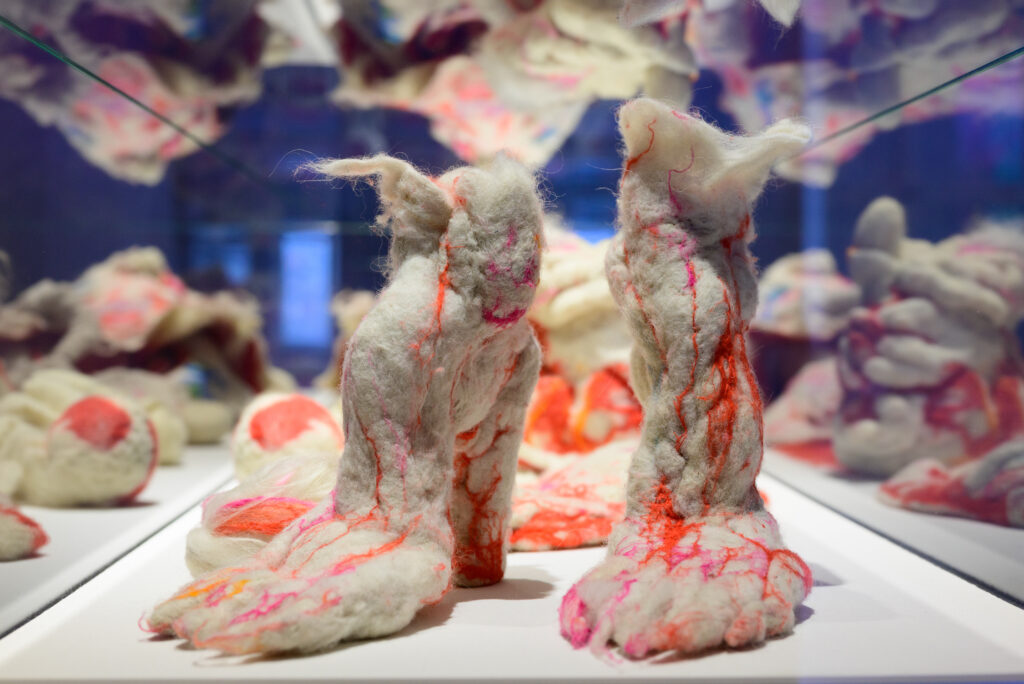![]()
Ziliä Qansurá (b. 1992)
About the artist
Ziliä Qansurá (b. Bashqortostan) is a multidisciplinary artist based in Vienna, Austria. She studied at the Academy of Fine Arts Vienna, as well as at the Russian Institute of Theatre Arts (GITIS), the Institute of Contemporary Art in Moscow, and Ufa College of Art. With a background spanning fine arts, stage design, and performance, her artistic path has taken her across different disciplines and places, shaping her perspective along the way. Growing up in Bashqortostan, she developed an early interest in visual and material culture, as well as the ways in which space, movement, and storytelling shape experience. Initially working in theater and stage design, she later expanded her practice to include installation, textiles and performance. Moving between different contexts, she has explored ways of working with history, identity and transformation. This evolving engagement continues to inform her practice, which remains open to shifts in medium, approach and interpretation.
Work being shown at ATM
Name: Soft Series (2022 – ongoing)
Location: The Holden Gallery
Media: felt sculptures, coloured natural wool, silk
Description: Softness by Ziliä Qansurá, an artist from Bashqortostan, is a felt anatomical cabinet that transforms textile into a site of memory, struggle and resistance. Examining the erasure of Indigenous cultures within colonial and post-Soviet contexts—particularly the suppression of Bashqort identity—Ziliä turns to felt, a material rooted in Bashqort craft, as both cultural reference and political statement.
Working with felt reconnects the artist to her childhood knowledge, ancestral traditions and the generational labor that shaped her world. Through the meditative process of felting—hot water, soap, and repeated pressing—fibers bind into dense forms, recalling both bodily organs and steppe growths. Organic patterns emerge, alive and shifting, suggesting veins, inner structures and landscapes of belonging.
This anatomical series subverts the European medical atlas and its patriarchal view of the female body. Instead, it envisions a body that metamorphoses, expands, and resists objectification while carrying pain, memory, and resilience. In Ziliä’s work, the non-white female body—turned inside out, at once intimate and uncanny—acquires political subjectivity and strange integrity, oscillating between repulsion and attraction.
Softness is at once personal and collective: a narrative of displacement, resistance and the reclamation of Indigenous presence through the tactile language of felt.
In TOThEM and TABOOed, Ziliä Qansurá creates a large-scale felt sculpture that merges animal form and anatomical exposure, presenting the wolf both as a sacred totem and as a dissected body. The work asks: what is the difference between instinctive worship and social taboo, between primitive impulses and cultural restrictions? By opening the wolf’s body and revealing its felt interior, Qansurá blurs the boundary between reverence and control, instinct and discipline. The wolf, a powerful figure in Bashkort culture, embodies resilience, ferocity, and belonging to the land. Yet here, its insides—rendered in painstaking felt work—speak to vulnerability, violence, and objectification. The sculpture becomes both altar and autopsy, a site where worship and suppression coexist. The wolf, a powerful figure in Bashkort culture, embodies resilience, ferocity, and belonging to the land. Yet here, its insides—rendered in painstaking felt work—speak to vulnerability, violence, and objectification. The sculpture becomes both an altar and autopsy, a site where worship and suppression coexist. In Qansurá’s hands, the wolf is no longer only animal—it is body, spirit, and metaphor, a reminder of how cultural resilience emerges through metamorphosis and the reclaiming of suppressed traditions.
Through this duality, Wolf reflects on broader questions of human existence: the tension between what societies revere and what they repress, between the organic drive of life and the cultural frameworks that seek to contain it. Felt, deeply tied to Bashkort daily rituals and ancestral craft, transforms into a medium of resistance and memory.

